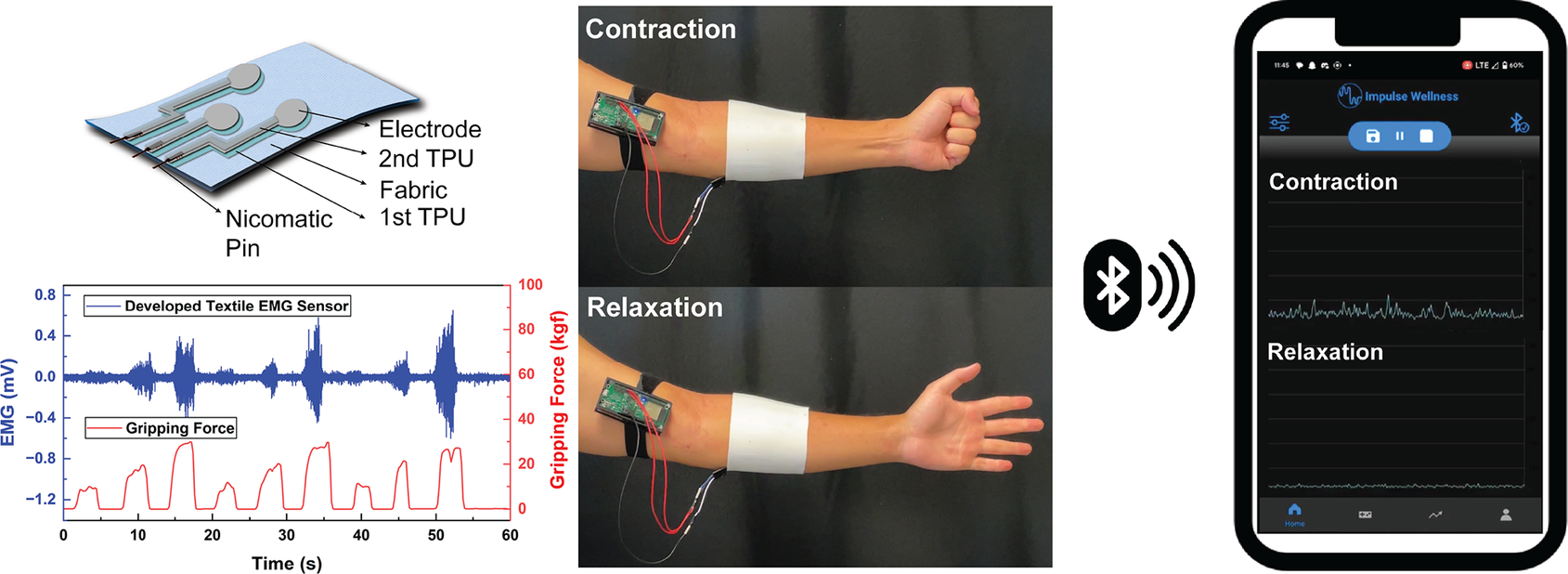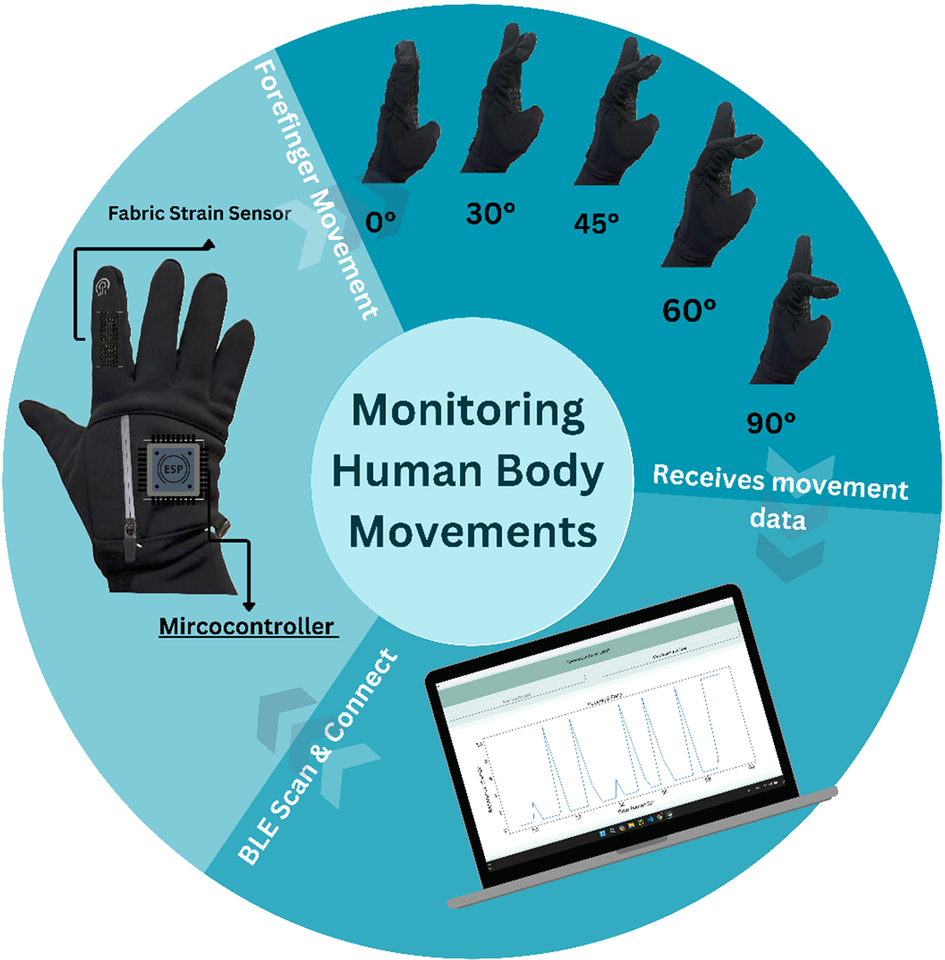Contents
Research Article
Wearable armband with a floating mobile exploratory electrode at fingertip for on-demand touch-and-measure multilead electrocardiography
-
- Published online by Cambridge University Press:
- 05 May 2025, e21
-
- Article
-
- You have access
- Open access
- HTML
- Export citation
Autonomous slip control inspired by human physiology for improved shared control strategy
-
- Published online by Cambridge University Press:
- 09 June 2025, e22
-
- Article
-
- You have access
- Open access
- HTML
- Export citation
Evaluation of fatigue progression during overhead tasks and the effects of exoskeleton assistance
-
- Published online by Cambridge University Press:
- 11 June 2025, e23
-
- Article
-
- You have access
- Open access
- HTML
- Export citation
Design, development, and evaluation of a novel shoulder phantom testbed for analyzing interaction forces and reachability of wearable exoskeletons
-
- Published online by Cambridge University Press:
- 17 June 2025, e24
-
- Article
-
- You have access
- Open access
- HTML
- Export citation
Comparative analysis of spatiotemporal gait parameters in patients with distal femoral megaprosthesis and healthy subjects using an inertial measurement unit (IMU)
-
- Published online by Cambridge University Press:
- 13 June 2025, e25
-
- Article
-
- You have access
- Open access
- HTML
- Export citation
Feasibility assessment of textile electromyography sensors for a wearable telehealth biofeedback system
-
- Published online by Cambridge University Press:
- 16 June 2025, e26
-
- Article
-
- You have access
- Open access
- HTML
- Export citation
Quantifying sitting posture: A pilot feasibility study of computer vision and wearable sensors (Posture Lab) using a manikin model
-
- Published online by Cambridge University Press:
- 16 June 2025, e27
-
- Article
-
- You have access
- Open access
- HTML
- Export citation
Novel magnetometer-free inertial-measurement-unit-based orientation estimation approach for measuring upper limb kinematics
-
- Published online by Cambridge University Press:
- 30 June 2025, e28
-
- Article
-
- You have access
- Open access
- HTML
- Export citation
Review Article
Clinical and instrument-based assessment of balance, gait, and motor functions in pediatric cerebral palsy: A systematic review
-
- Published online by Cambridge University Press:
- 30 June 2025, e29
-
- Article
-
- You have access
- Open access
- HTML
- Export citation
Research Article
Design optimization platform for assistive wearable devices applied to a knee damper exoskeleton
-
- Published online by Cambridge University Press:
- 10 July 2025, e30
-
- Article
-
- You have access
- Open access
- HTML
- Export citation
Understanding the perspectives of older adults and physiotherapists on home-based lower-limb exoskeletons
-
- Published online by Cambridge University Press:
- 14 July 2025, e31
-
- Article
-
- You have access
- Open access
- HTML
- Export citation
A soft 3-DOF interaction force measurement system for estimating the biomechanical effects of a soft wearable robot on the human joint
-
- Published online by Cambridge University Press:
- 15 July 2025, e32
-
- Article
-
- You have access
- Open access
- HTML
- Export citation
Closed-loop versus open-loop “remind-to-move” treatment using wearables for hemiparetic upper extremity in patients after stroke: A proof-of-concept study
-
- Published online by Cambridge University Press:
- 17 July 2025, e33
-
- Article
-
- You have access
- Open access
- HTML
- Export citation
Design of an ankle exoskeleton with twisted string actuation for running assistance
-
- Published online by Cambridge University Press:
- 22 July 2025, e34
-
- Article
-
- You have access
- Open access
- HTML
- Export citation
Frugally inventive carbon fabric-based wearable sensor for monitoring human body movements
-
- Published online by Cambridge University Press:
- 25 July 2025, e35
-
- Article
-
- You have access
- Open access
- HTML
- Export citation
Performance characterization of a novel semi-active exoskeleton for overhead work
-
- Published online by Cambridge University Press:
- 30 July 2025, e36
-
- Article
-
- You have access
- Open access
- HTML
- Export citation
Biomechanical and physiological effects of passive upper limb exoskeletons in simulated manufacturing tasks
-
- Published online by Cambridge University Press:
- 01 August 2025, e37
-
- Article
-
- You have access
- Open access
- HTML
- Export citation
Decoupled, wearable soft robotic rehabilitation device for the upper limb
-
- Published online by Cambridge University Press:
- 07 August 2025, e38
-
- Article
-
- You have access
- Open access
- HTML
- Export citation
Simulation of stroke gait impairment correction using cable-driven lower limb rehabilitation exoskeleton (C-LREX)
-
- Published online by Cambridge University Press:
- 08 August 2025, e39
-
- Article
-
- You have access
- Open access
- HTML
- Export citation
A novel portable device and validation procedure for transcutaneous electrical nerve stimulation
-
- Published online by Cambridge University Press:
- 11 August 2025, e40
-
- Article
-
- You have access
- Open access
- HTML
- Export citation

















